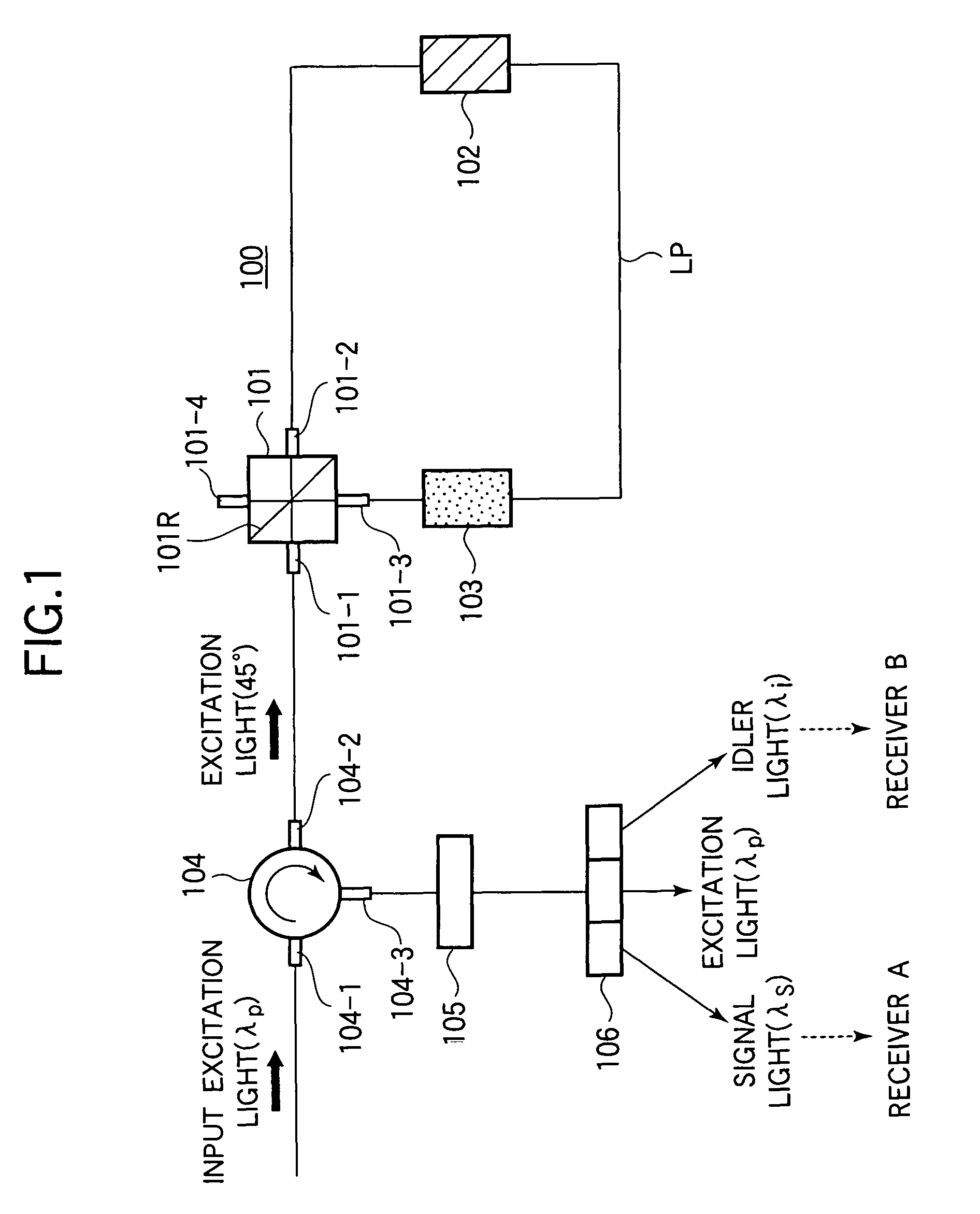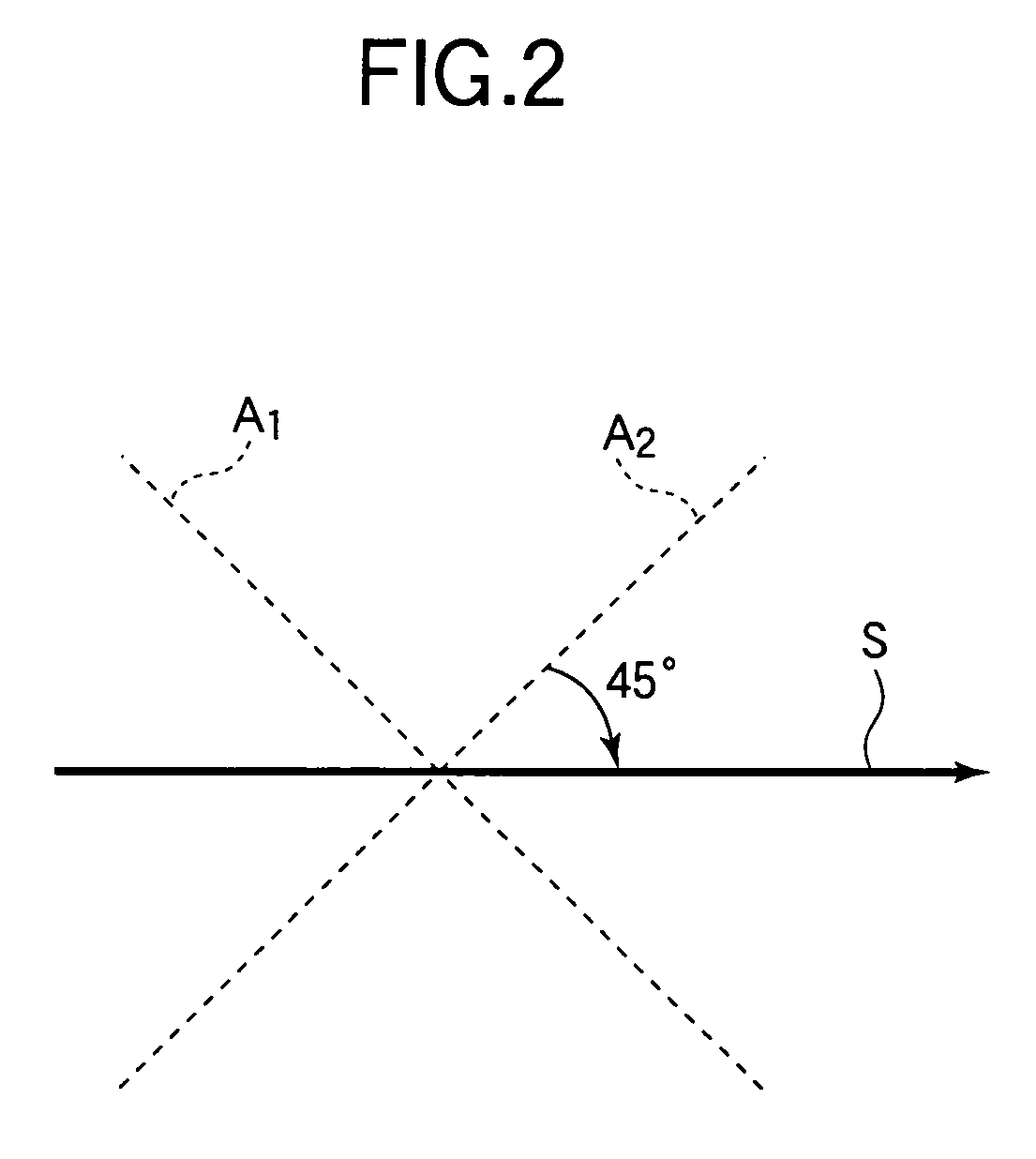Quantum entangled photon pair generating device
a quantum entangled and photon pair technology, applied in the field of quantum entangled photon pair generation devices, can solve the problems of affecting the quality of quantum entangled photon pairs generated for output, the coupling efficiency of a lens system designed for operation at both 775 nm and 1550 nm is generally inferior to the polarization extinction ratio of a pbs, and the loss of both input ex
- Summary
- Abstract
- Description
- Claims
- Application Information
AI Technical Summary
Benefits of technology
Problems solved by technology
Method used
Image
Examples
first embodiment
[0039]Referring to FIG. 1, the quantum entangled photon pair generating device 100 in the first embodiment includes at least a polarization splitting-combining module 101, a second-order nonlinear optical medium 102, and a first half-wave plate 103. Two of the input and output ports of the polarization splitting-combining module 101, the second-order nonlinear optical medium 102, and the first half-wave plate 103 constitute a Sagnac interferometer loop, in which the first half-wave plate 103 functions as the polarization manipulation unit. The quantum entangled photon pair generating device 100 also includes an optical circulator 104, an optical low-pass filter 105, and a wavelength division multiplexing (WDM) filter 106 that function as optical input / output devices for input of excitation light to and output of entangled photon pairs from the optical loop LP.
[0040]The optical loop LP is preferably a polarization maintaining optical system. Accordingly, special consideration is give...
second embodiment
[0129]The second embodiment uses a more complex polarization manipulation unit in the optical loop in order to eliminate the optical circulator used in the first embodiment.
[0130]Referring to FIG. 8, the quantum entangled photon pair generating device 100C in the second embodiment replaces the first half-wave plate used in the first embodiment with two pairs of nonreciprocal polarization converters 211, 212, each consisting of a Faraday rotator and a half-wave plate. This structure guarantees that the fundamental operations described in the first embodiment can be carried out, and enables the desired quantum entangled photon pairs to be output from a different port of the polarization splitting-combining module 101 than the port at which the excitation light is input.
[0131]The first nonreciprocal polarization converter 211 includes a first Faraday rotator 207 and a second half-wave plate 208 inserted in cascade on the optical loop LP between the third input / output port 101-3 of the ...
third embodiment
[0156]Referring to FIG. 11, the quantum entangled photon pair generating device 100D in the third embodiment is generally similar in structure to the quantum entangled photon pair generating device in the first embodiment, but it lacks the optical low-pass filter of the first embodiment and instead includes a polarization converter 314 between the second input / output port 101-2 of the polarization splitting-combining module 101 and the second-order nonlinear optical medium 102. The polarization converter 314 includes a fourth half-wave plate 311, a quarter-wave plate 312, and a fifth half-wave plate 313 coupled in cascade.
[0157]The optical axes of the fourth half-wave plate 311, quarter-wave plate 312, and fifth half-wave plate 313 are aligned as shown in FIG. 12. The optical axes of the fourth half-wave plate 311 and the fifth half-wave plate 313 are rotated clockwise by angles of 22.5° from the p- and s-polarization directions (the p-polarization direction is shown in FIG. 12). Th...
PUM
| Property | Measurement | Unit |
|---|---|---|
| wavelengths | aaaaa | aaaaa |
| wavelengths | aaaaa | aaaaa |
| wavelength | aaaaa | aaaaa |
Abstract
Description
Claims
Application Information
 Login to View More
Login to View More - R&D
- Intellectual Property
- Life Sciences
- Materials
- Tech Scout
- Unparalleled Data Quality
- Higher Quality Content
- 60% Fewer Hallucinations
Browse by: Latest US Patents, China's latest patents, Technical Efficacy Thesaurus, Application Domain, Technology Topic, Popular Technical Reports.
© 2025 PatSnap. All rights reserved.Legal|Privacy policy|Modern Slavery Act Transparency Statement|Sitemap|About US| Contact US: help@patsnap.com



